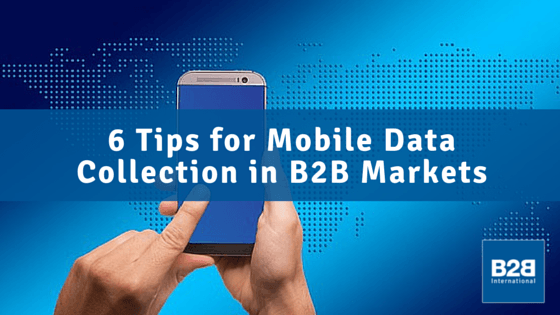
We see a tremendous potential for mobile surveys in B2B markets: business decision makers are time-pressed, and research buyers expect agencies to be flexible in using all possible survey channels to maximise research participation. Offering surveys on mobile devices is a great way to meet these expectations.
From our experience of conducting mobile surveys in B2B markets we think that the following six important points are worth bearing in mind when conducting mobile market research:
-
Responsive Design is necessary: The survey must adapt to the device it is viewed on, rather than just being a smaller version of the e-survey, otherwise the user experience will suffer, along with the data quality.
-
Less is more: It is worth reducing the number of questions, when the survey detects a mobile device, to ensure that respondents stay engaged.
-
Simpler concepts work best: concepts that take longer to demonstrate or explain are not suited for mobile devices, when people generally expect to complete the survey quicker.
-
Costs count: remember that mobile devices often have data limitations when roaming; respondents might not like to spend their data allowance on large pictures or video clips for research purposes. Internationally, many markets still have relatively low data limits and high charges.
-
Limited verbatim opportunities: Respondents tend to be less likely to fill in open-ended responses on mobile devices. Researchers should opt for to-the-point open-enders, and generally go with closed questions whenever possible.
-
Consider multi-mode options: certain questions are better completed on a device than during a phone interview. Combining a short mobile e-survey with a telephone interview is a good option to keep respondents engaged, and utilise a wider variety of questions.
These are just a few tips to consider when conducting research on mobile devices. The most important consideration is whether mobile data collection is optimal for the subject matter and target audience. In selected B2B markets, we are increasingly convinced that this is the case.


